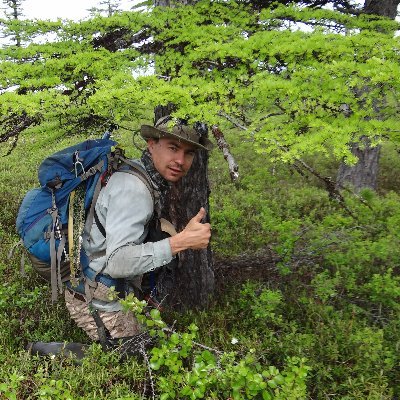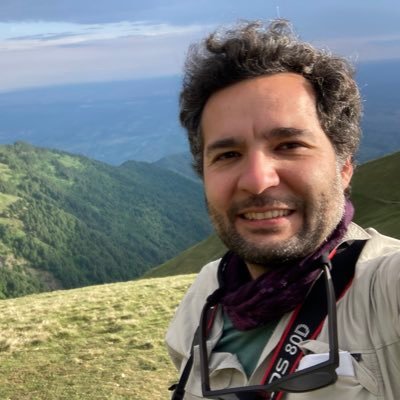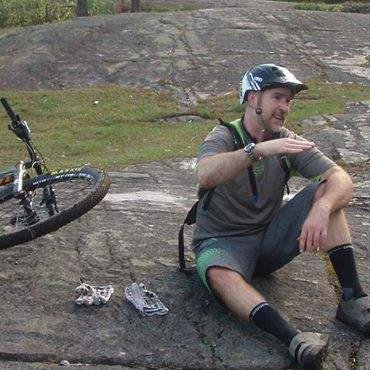
SILVIS Lab
@SilvisLab
Followers
492
Following
49
Media
16
Statuses
81
Spatial analysis for conservation and sustainability | Lab at the University of Wisconsin-Madison
Madison, WI
Joined November 2020
Differences in flammability and risk between human- and lightning-ignited fires are obvious. Our new paper reveals this issue with strong implications for fire modeling and management.
Risky days for anthropogenic fires are growing faster than risky days for lightning-caused fires. Human-caused fires can occur in wetter conditions, as they ignite in dead grass or wood, rather than in the moist canopy where lightning strikes. Read now: https://t.co/eMfPpIL4FF
1
2
5
📌New Publication Our recent study, led by @AfagRizayeva published in @Regional Environmental Change highlights the feasibility and value of early spy satellite data for long-term land cover change analyses Full paper: https://t.co/8WZmSFXIH2 Data:
link.springer.com
Regional Environmental Change - Land cover change substantially affects ecosystems and leaves long-lasting legacies. Unfortunately, land cover analyses typically begin in the mid-1980s, when 30-m...
0
1
3
📌New Publication Our recent study, led by @rohansimkin published in @GlobalChangeBio, highlights the impact of rapid urbanization on the emergence of zoonotic diseases worldwide. The risk is particularly high in the Global South. Full paper: https://t.co/X11HwDzM8m
0
15
37
New publications from @SilvisLab, led by @TringaShank!
Proud to publish a Forum piece in @WaderStudy about protecting shorebirds (e.g., Spotshanks) in the Inner Gulf of Thailand thanks to @TheWCS, @BCSThailand, and @BirdLife_Asia. One small step in the fight to safeguard our feathered friends! https://t.co/j9FZJ3M0m6
0
0
4
@SilvisLab had an incredible time at #AGU24! 🌍 Inspiring sessions, engaging talks, and meaningful connections. Thanks to our amazing presenters @esilveira_duda, @Duanyang_Liu, @Connor_Stephens, @Elbegjargal, and @Franz_Schug for representing us so well!
0
0
5
Published in @ConBiology! Effectiveness of protected areas in the #Caucasus Mountains in preventing #rangeland #degradation Using greenness indicators in 52 PAs from 1988-2019, we showed that they’re ineffective in preventing degradation Open access: https://t.co/KtJOcrXdPl
4
15
51
📌New Publication Led by @ArashGhoddousi, our study on 52 protected areas (PAs) in the Caucasus shows challenges in preventing rangeland degradation from overgrazing. Multiple-use PAs were notably less effective than strictly protected ones. @ConBiology
https://t.co/hGau2P2r35
conbio.onlinelibrary.wiley.com
As land use intensifies globally, it increasingly exerts pressure on protected areas. Despite open, nonforested landscapes comprising up to 40% of protected areas globally, assessments have predomi...
0
2
6
🚨 Just 5 days left! 🚨 Looking for #PhD and #PostDoc opportunities? Don’t miss this chance to join our team! We will start reviewing applications on November 10th, so apply soon! #opportunity #PhD #academicjobs
We have two exciting opportunities at @SilvisLab, @UWMadison! We are looking for a Postdoc and a PhD student to join our research on Wildfires, Biodiversity, and the Wildland-Urban Interface. Please share or RT! For more information:
0
2
0
#GLPOSM5 pre conference @LCLUCProgram South America focus @SilvisLab Volker Radeloff on wildlife urban interface dynamics and wildfires in South America
0
1
3
Products for global change science and management applications. Propose 13 essential, 11 desirable, plus aspirational products. #landcover #biodiversity Radeloff et al. Need and vision for global medium-resolution #Landsat and #Sentinel2 data products. 🔗 https://t.co/3hPealXdIR
0
13
47
The Department of Forest and Wildlife Ecology at @UWMadison invites applicants for a tenure-track Assistant Professor in Sustainability of Natural Resources. Spread the word! For further information and to apply:
0
8
12
📌New Publication Artificial light at night reveals hotspots and rapid development of industrial activity in the Arctic. Led by @AkandilCengiz from the @UZH_en. Excited to share this collaborative work now published in @PNASNews
https://t.co/oqT9knV7tU
#Arctic #Sustainability
0
3
3
📌 New Publication We developed a hybrid machine learning (ML) fire model that outperforms traditional methods. Led by #FaLi from @mmmmchen lab, the model offers higher accuracy and better physical interpretability. Paper: https://t.co/sc9bshW7Qv Code: https://t.co/brVKyuy1Mx
0
0
5
We have two exciting opportunities at @SilvisLab, @UWMadison! We are looking for a Postdoc and a PhD student to join our research on Wildfires, Biodiversity, and the Wildland-Urban Interface. Please share or RT! For more information:
silvis.forest.wisc.edu
Overview: Wildfires are the biggest problem in the wildland urban interface (WUI), i.e., the area where houses and wildland vegetation mix or intermingle, and this combination of fires and developm...
0
27
40
📌Publication alert Did you know that sound can reveal the health of an ecosystem? Restored oak woodlands show higher biodiversity, reflected in the vibrant soundscapes of birds and insects. Our new paper led by @MPersche published in Oecologia https://t.co/sYUkliHi6F
1
3
6
📌Publication alert NASA’s Global Ecosystem Dynamics Investigation (GEDI) LiDAR reveals how canopy structure across North America drives avian diversity. We assessed the best vegetation structure metrics when predicting bird diversity in North America. https://t.co/i7yi4Il23y
3
9
34
This prestigious award recognizes their outstanding research and provides a 3-year merit-based research grant to support their innovative work under PI Prof Volker Radeloff. Congratulations Akash and Elbegjargal. 💐💐 #SilvisLab #NASA #FINESST #Research #EarthScience
0
0
1
FI Elbegjargal Nasanbat (@ElbegjargalNasa) will assess the patterns of grassland degradation in Mongolia, identify its causes, and quantify protected area effectiveness. Read more about his work; https://t.co/uv1zqbZKIV
1
1
2
FI Akash Anand (@anand97aakash) uses explainable AI models and remote sensing data to study avian habitat selection, distribution, and response to local ecosystems. Read more about his work; https://t.co/edZrxtR2pw
1
1
2







